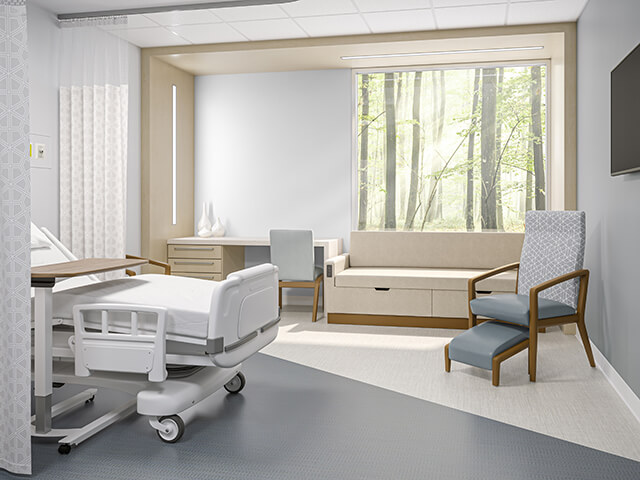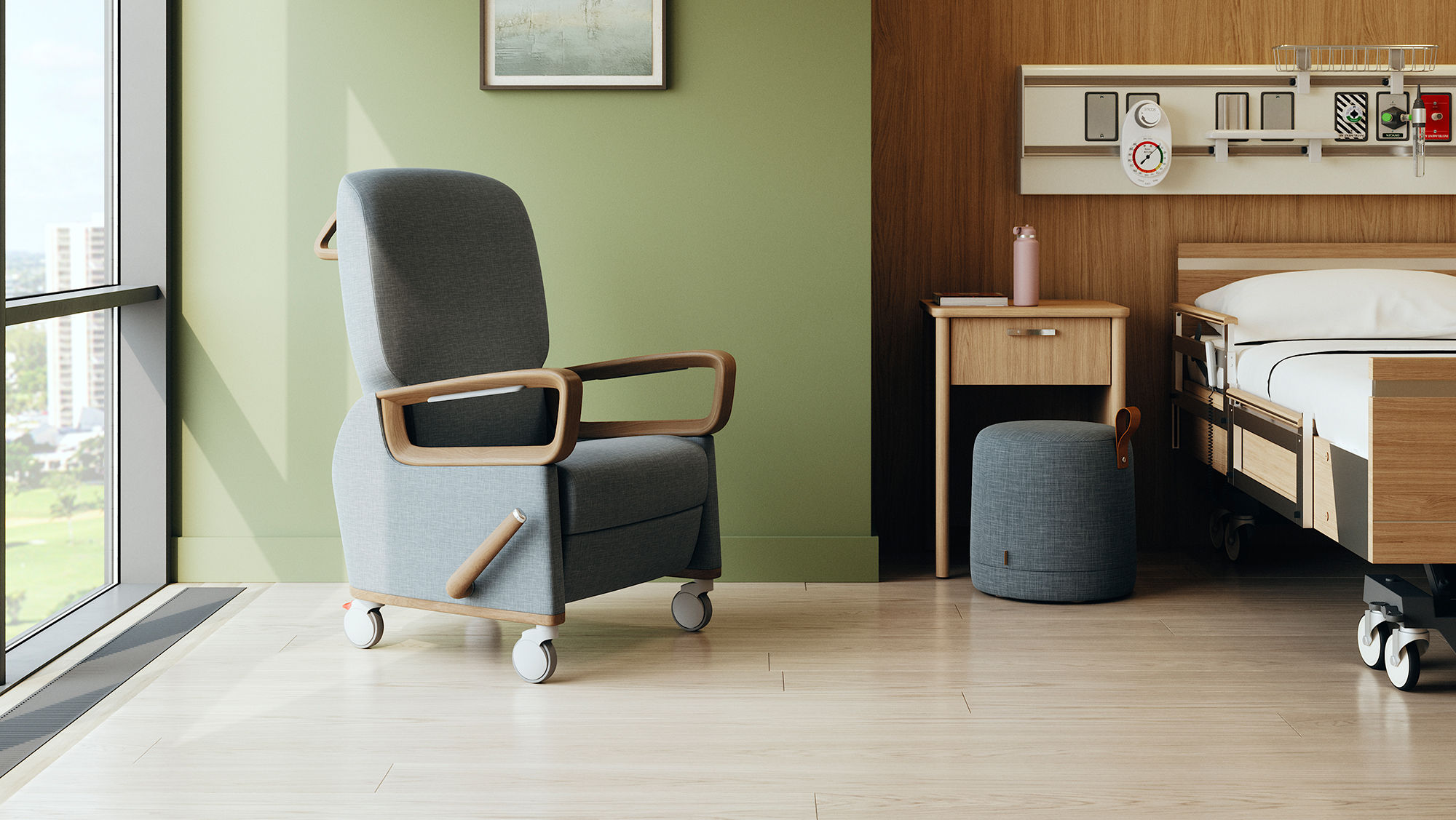A Healing Connection to Nature

Designing for care means going beyond functionality to create spaces that truly feel comforting and human. Furniture that mimics the natural alignment of the body reflects the soft supportive qualities of nature.
April 2025
Biophilic design, the practice of integrating nature into interior spaces, is becoming increasingly influential in healthcare settings. In patient rooms, this can be achieved through natural light, views of the outdoors, and the use of natural materials and organic forms throughout the space. When paired with furniture that complements these elements—through subtle textures, gentle curves, and materials inspired by the natural world—healthcare environments can foster a stronger connection to nature, promoting healing and emotional well-being.
Benefits of Biophilic Design in Patient Rooms
Biophilic elements have been shown to reduce stress, lower blood pressure, and improve overall health outcomes. Patients in nature-inspired environments often experience shorter hospital stays and require less pain medication.
Beyond physical health, biophilic design supports emotional well-being by creating calming, restorative spaces. This can be especially beneficial for patients and their families during stressful or prolonged hospital stays.
Blending Warmth and Cleanability
Furniture that captures the warmth and texture of natural materials, like wood or bamboo, can create a comforting, grounded atmosphere in patient rooms. However, traditional materials may not meet the strict infection control standards required in healthcare settings. To address this, designers are turning to advanced materials, like Protea™, that replicate the appearance of natural finishes while offering greater durability and cleanability. These solutions provide the aesthetic benefits of wood without compromising the need for a safe and hygienic environment.
Organic Shapes and Textiles
Nature rarely presents itself in rigid lines or sharp angles. Incorporating organic shapes into furniture design—such as rounded edges, flowing contours, or curved seating—can evoke a sense of harmony and calm. Furniture that mimics the natural alignment of the body enhances comfort while also reflecting the soft, supportive qualities of nature.
Upholstered furniture pieces, such as patient chairs or guest seating, can feature textiles inspired by nature. Patterns of leaves, flowers, or flowing water create a visual connection to the outdoors, while earthy tones like greens, browns, and blues foster a serene atmosphere. Using solid surface finishes on counters, tables and furniture frames ensure a biophilic quality, while still meeting infection control standards.
Adaptable Designs and Greenery
Furniture can directly incorporate plant life. For instance, side tables or headboards with built-in planters bring greenery into the room without taking up additional space. These integrated features allow patients to experience the calming effects of plants, which improve air quality and reduce stress. Sealed planters or artificial greenery can be used in environments where live plants might pose challenges.
Biophilic furniture can also be designed to enhance patient interaction with nature. For example, movable seating can be oriented toward windows with outdoor views, allowing patients to feel more connected to the outdoors.
Create Healing Environments
Incorporating biophilic elements into patient room design helps create environments that support healing and well-being. By integrating natural materials, organic shapes, and connections to the outdoors, healthcare spaces can reduce stress, foster recovery, and enhance the overall patient experience. Furniture that complements these biophilic principles not only serves a functional purpose but also reinforces the essential connection between nature and holistic care.



About the Author
Tavie Verhagen serves as the Vice President of Architecture and Design at Kwalu. She partners with healthcare leaders and designers to develop innovative, future-ready solutions. With seven years of experience in healthcare architecture and design, Tavie brings a thoughtful and holistic approach to her work. She is passionate about creating spaces that support patient well-being and promote operational excellence.